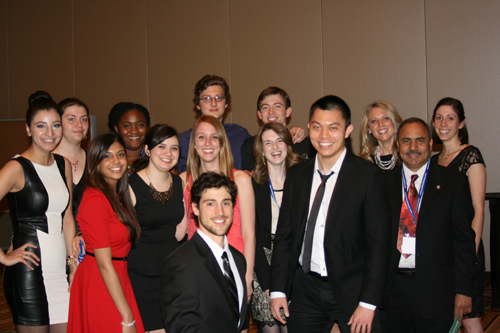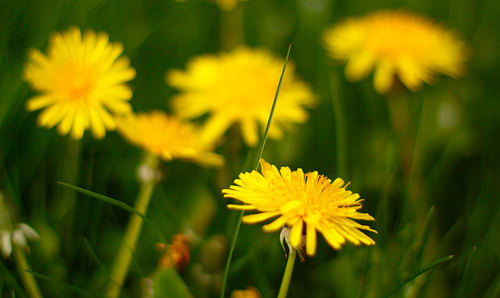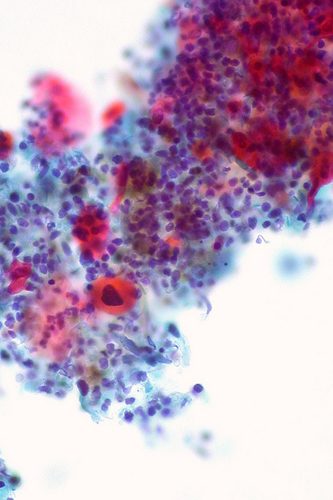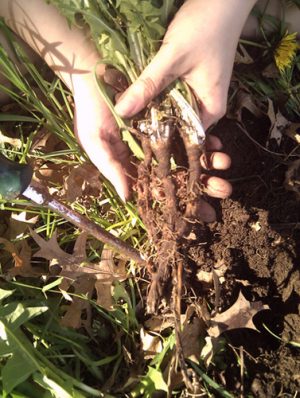Sunitha Chari, Biology & Life Sciences co-editor
Cancer, one of the leading causes of death in modern times, is not a new disease. It has been around since ancient times, with some of the earliest evidence found in Egyptian mummies. In fact, cancer derives its name from the Greek work for tumors, karkinos, and was described by the ancient Greek physician Hippocrates, who is credited with framing The Hippocratic Oath taken by all physicians today. Ancient manuscripts record cancer incidence, and the surgeons of the past who removed cancer even reported instances of relapse. And, although no cure for cancer existed, physicians were known to recommend plant-based products along with palliative care.
With the advances of modern medical science, our understanding of cancer has progressed well beyond that of our ancestors. Today, we know that cancer is not a single disease but a collection of related diseases, all sharing a common characteristic: cancer cells’ ability to divide rapidly, forming tumors that eventually spread to the surrounding tissue by metastasis. Consequently, treatment regimens aim to inhibit cancer cells from multiplying and many anti-cancer drugs are designed to disrupt the process of cell division.
Chemotherapy, which has emerged as an important cancer treatment, also relies on halting cell division. Common cellular targets of chemotherapy drugs are the DNA or RNA that are present in all cells and transmit genetic information from one generation to the next, or the proteins involved in mitosis, the process of cell division. It turns out that ancient physicians were on to something: some of today’s iconic chemotherapy drugs also started their lives as plant-based products. Paclitaxel, which is sold under the brand name Taxol, is derived from the bark of the Pacific yew tree and is commonly used to treat breast, ovarian and lung cancer, as well as Kaposi’s sarcoma. A mitotic inhibitor, paclitaxel targets cellular microtubules that play an important role in cell division. Vinca alkaloids isolated from the periwinkle plant also disrupt cell division. While these drugs kill cancer cells, they also kill healthy, normal cells. The toxicity of paclitaxel and Vinca alkaloids serves as a cautionary tale – just because a product is ‘natural’ does not necessarily mean it is safe.
The inability of chemotherapy to distinguish between healthy cells and cancer cells has been its greatest disadvantage, and a common side effect of chemotherapy is that the patient is left weak and immunocompromised. Therefore, a focus of recent and emerging cancer treatments includes targeted therapies that selectively kill cancer cells without harming normal, healthy cells. To address this problem, some researchers are looking to the past: recent scientific studies suggest that by selectively targeting certain cellular components, some plant-based products used in traditional medicine may offer novel solutions.
Because of their rapid cell division, cancer cells require considerably more energy than normal healthy cells. Mitochondria, the so-called powerhouses of the cell, usually generate most of the energy needed for the cell. The high-energy requirements of a cancer cell place it under metabolic stress, which in turn causes the mitochondria of cancer cells to develop and behave differently from their normal counterparts. The differences in the mitochondria of a cancer cell and a normal cell can therefore be exploited to develop targeted anti-cancer therapies.
This brings us to the laboratory of Dr. Siyaram Pandey, a professor in the department of Chemistry and Biochemistry at the University of Windsor. Dr. Pandey and his group have been studying the effect of plant-based products on cancer cells, and are known for their work on dandelion root extract (DRE). Dr. Pandey’s group began investigating the effect of DRE on cancer cells after conversations with an oncologist, Dr. Caroline Hamm, hinted at the anti-cancer properties of dandelion. Dr. Hamm noticed that an elderly leukemia patient, whose cancer was resistant to chemotherapy, reported a lower white blood cell count following a regimen of dandelion tea. Intrigued by these findings, she approached Dr. Pandey to investigate the effect of DRE on cancer cells. Until these experiments shed light on DRE’s biochemistry and anti-cancer properties, dandelion, long used in traditional medicine for its anti-inflammatory properties, had been mostly unknown to the scientific community.
The Pandey lab’s in-vitro studies from different types of cancer cell lines, including leukemia, melanoma, colorectal and pancreatic, concluded that DRE is highly effective in killing cancer cells by committing them to either apoptosis (programmed cell death) or autophagy (a process by which cells destroy themselves). Furthermore, they showed that this effect was very specific to cancer cells – normal cells were not affected. They studied the chemical composition of DRE and found that it comprised many compounds acting synergistically to destabilize the mitochondrial membrane and, literally, turn the cancer cell against itself. These results suggest that compounds that selectively destabilize the mitochondria of cancer cells might offer a precisely and accurately targeted anti-cancer therapy with little or no toxicity to normal, healthy cells.
Encouraged by the in-vitro results, Health Canada sanctioned a clinical trial to test the efficacy of DRE in treating cancer patients who have not responded to other treatment options. This is an ongoing phase 1 clinical trial, and while the in-vitro results are promising, long-term clinical data are needed to confirm DRE’s suitability as a potential targeted anti-cancer therapy. Even if DRE is found to be safe and effective, cancer has a complex pathology influenced by multiple factors, and there can be no miracle cure. In fact, two individuals suffering from the same type of cancer do not necessarily share similar prognoses or require the same treatment regimen.
Successful long-term management of cancer in the population will require multiple strategies, and the importance of developing novel targeted therapies cannot be overstated. If, by selectively targeting cancer cell mitochondria, plant-based products like DRE offer an efficient and non-toxic alternative to existing chemotherapy treatments, they will make a valuable addition to the existing repertoire of anti-cancer therapies.
So it seems that everything old really is new again, and a modern understanding of ancient remedies is yielding new weapons in the fight against an age-old foe.

Team Pandey at the Natural Health Product Research Society of Canada’s 2013 annual conference. Photo courtesy of Dr. Pandey, seen here, second from right.
–30–
Photo credit, top photo: © Waferboard, CC BY 2.0








I would like to know more of squamous cells and what to use to get rid of it. Please help